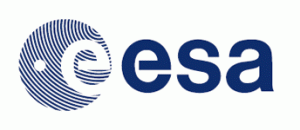![]() =>
=> ![]() Update (March 19th) : the final list of sites has been released. In November, ESA released a call for proposals to select the sites
Update (March 19th) : the final list of sites has been released. In November, ESA released a call for proposals to select the sites  to be observed during the SPOT5 (Take5) experiment. 62 proposals were received, with more than 100 sites submitted. ESA appointed a committee to review the proposals, a first list of 110 sites was issued, including the sites proposed by CNES and ESA for their own projects. CNES did a first assessment of the possibility to acquire all these data, taking into account the motion speed of the mirrors, the memory and download capacity, the amount of time necessary to prepare the
to be observed during the SPOT5 (Take5) experiment. 62 proposals were received, with more than 100 sites submitted. ESA appointed a committee to review the proposals, a first list of 110 sites was issued, including the sites proposed by CNES and ESA for their own projects. CNES did a first assessment of the possibility to acquire all these data, taking into account the motion speed of the mirrors, the memory and download capacity, the amount of time necessary to prepare the ![]() programming for each 5 days cycle in this special context, far from the nominal orbit.. Following these tests, CNES and ESA agreed to add 40 more sites in the list. The final feasibility study for the 40 additional sites has started at CNES and should be completed by mid March. But, since we are only one month from the start of experiment, CNES and ESA decided to release it in its provisional state, so that users can get ready, especially if they intend to collect field data. This list is now available below. The likelihood of its feasibility is quite high, although a couple of sites might be cancelled, where the density of sites is high. We hope the proposers of the few sites which might not be kept finally will understand. Areas of Interest of concern are: Austria, the region near the French German border, and Luxembourg. [map style= »width: auto; height:400px; margin:20px 0px 20px 0px; border: 1px solid black; » maptype= »OSM » kml= »https://labo.obs-mip.fr/wp-content-labo/uploads/sites/19/2014/03/all_sites_provisionnal.kml »]From now on, and until the start of the experiment next month, all the ancillary data necessary to do the processing need to be set-up, which requires :
programming for each 5 days cycle in this special context, far from the nominal orbit.. Following these tests, CNES and ESA agreed to add 40 more sites in the list. The final feasibility study for the 40 additional sites has started at CNES and should be completed by mid March. But, since we are only one month from the start of experiment, CNES and ESA decided to release it in its provisional state, so that users can get ready, especially if they intend to collect field data. This list is now available below. The likelihood of its feasibility is quite high, although a couple of sites might be cancelled, where the density of sites is high. We hope the proposers of the few sites which might not be kept finally will understand. Areas of Interest of concern are: Austria, the region near the French German border, and Luxembourg. [map style= »width: auto; height:400px; margin:20px 0px 20px 0px; border: 1px solid black; » maptype= »OSM » kml= »https://labo.obs-mip.fr/wp-content-labo/uploads/sites/19/2014/03/all_sites_provisionnal.kml »]From now on, and until the start of the experiment next month, all the ancillary data necessary to do the processing need to be set-up, which requires :
- defining the footprint of the products.
- finding reference image for the ortho-rectification, in the LANDSAT 8 data base.
- finding digital elevation models for each site. SRTM will be used in the latitudes between -60 and +60, but elsewhere, we will have to find other data sources.
- tuning the gains for the sites usually covered by snow, in order to avoid to saturate the snow.
